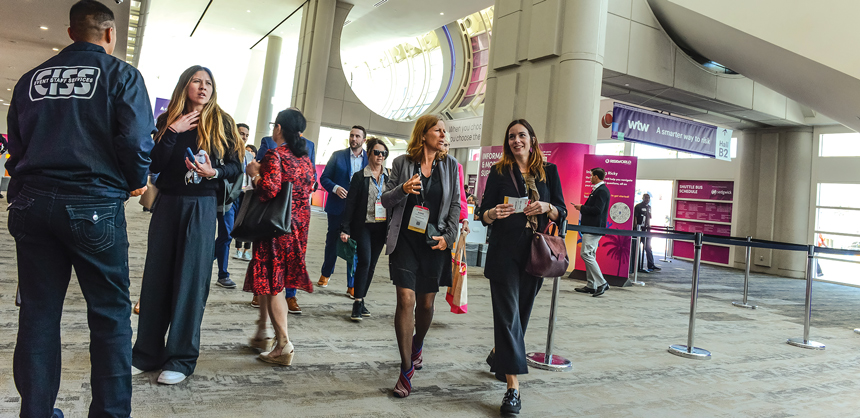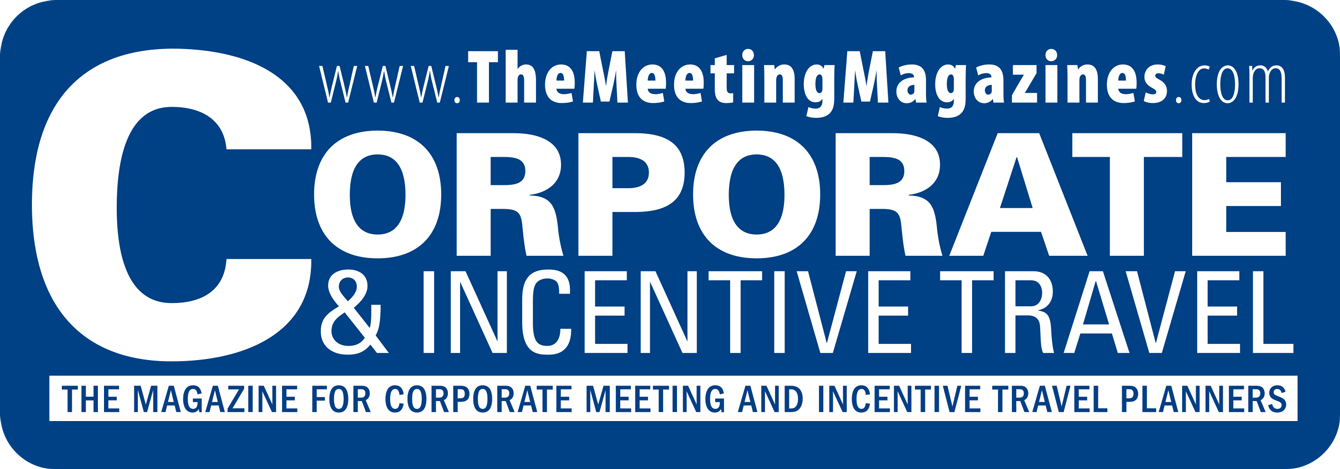Tragedy Spurs ActionMarch 20, 2025
How Meeting Planners Are Rethinking Security Protocols By Kathy MonteTragedy Spurs Action
How Meeting Planners Are Rethinking Security Protocols
Daymond John delivers the closing keynote address at RISKWORLD 2024 in San Diego. ©RIMS
The much-publicized killing of UnitedHealthcare CEO Brian Thompson outside the Hilton Midtown in Manhattan has sent shockwaves through the corporate event planning world. Thompson had been scheduled to speak at the company’s annual investor conference, and it is alleged that Luigi Mangione approached him from behind and shot him with a ghost gun, striking the executive in the back and calf. Thompson ultimately succumbed to his injuries.
This tragic event has forced many meeting planners to reevaluate safety protocols at their events. Public safety remains a critical concern, with over 42,000 gun-related deaths reported in the U.S. in 2023, according to the National Institute for Health Care Management.
Rethinking Security Measures
Gathering large groups of people in semipublic spaces comes with inherent risks, and meeting professionals are tasked with ensuring safety while maintaining the event’s accessibility and appeal. Even in venues with firearm bans, not everyone complies. For instance, the TSA intercepted over 6,700 firearms at airport security checkpoints in 2023, despite clear communication that such weapons are prohibited in carry-on luggage.
Security measures such as magnetometers and hand-held metal detector wands are commonly used but not infallible. Ghost guns, which can bypass traditional detectors due to their polymer construction, now add an additional layer of complexity to event security planning.
An event safety plan is imperative for all gatherings. Planners must identify all risks and hazards, because the unforeseen can happen at any time, and having a prepared, organized approach can not only save lives but also mitigate trouble.
Safety protocols help ensure that, should an incident occur, everyone knows what to do and where to go. For example, having first-aid stations, trained onsite medical staff and clear evacuation routes can make a world of difference during an emergency.
Additionally, security needs to be considered. Depending on the size and nature of the event, it might be necessary to do background checks for attendees, implement bag checks or hire onsite security personnel to prevent any unwanted situations.
This year’s Consumer Electronics Show (CES) had security measures in place that included bag searches at the entrances to all show venues. In addition, a unique email address was required for each registrant. Event badges also included a photo ID for attendees, exhibitors and media. There was also a highly visible law enforcement presence at all venues throughout the show. Officers and K-9 (dog) units were situated at both the entrances to the venues and on the exhibit floor. In addition, as an enhanced security measure, the Consumer Technology Association (CTA) implemented a vehicle deterrence plan in and around key venues.
However, CES isn’t the only conference that has increased security since Thompson’s murder. J.P. Morgan’s recent healthcare conference in San Francisco had a significant police presence in place as well.
No one expects things to go wrong, but when they do, having a crisis-management strategy can help reduce chaos and confusion. A safety plan should outline the steps to follow in the event of an emergency, whether it’s an evacuation, an active-shooter situation or a severe weather event.
For example, having a designated crisis team — comprising staff trained in emergency procedures, including communication — can be crucial. This group should be equipped with a plan that includes communicating with attendees, liaising with local authorities and managing any media inquiries. This ensures that all actions are coordinated, which minimizes panic and confusion.
A visible safety plan reassures attendees that their well-being is a top priority, and when participants feel secure, they are more likely to engage fully in the event.
The best safety plans aren’t reactive; they are proactive. By anticipating potential risks ahead of time, organizers can take preventive measures. These might include securing appropriate insurance, ensuring all venues comply with local safety standards and planning for contingencies such as severe weather or local strikes.
Risk management can also extend to data protection, especially for events that involve sharing sensitive information. Ensuring that cybersecurity measures are in place protects not just physical safety but digital safety as well.
Ultimately, a well-developed safety plan provides peace of mind for event organizers. When everyone — attendees, staff and vendors — knows what to do in an emergency, the event can proceed smoothly, no matter what challenges arise. Having safety measures in place also reduces stress on the team, allowing them to focus on delivering a successful and memorable event, rather than worrying about what might go wrong.
One person who knows about keeping meetings safe is attorney Joshua L. Grimes of Grimes Law Offices in Philadelphia, PA.
“Planners should carefully assess if guards or police presence is needed to ensure that there will be no interference in a meeting,” Grimes says. “For example, a VIP speaker may require a security presence, as might a meeting convened for a controversial purpose. The planner and venue should also determine if security is needed to exclude uninvited persons. Extra security costs are usually the responsibility of the meeting host, so it’s important to budget accordingly.”
Cybersecurity also should be considered as part of security preparations. Internet networks should be verified as secure, and the venue should be checked for pirate networks. The “official” Wi-Fi access points should be clearly indicated for attendees so they won’t use a pirate connection that might compromise their secure access, Grimes says.
Then there’s the concern about actual weapons.
“Keeping guns out of meetings is not a black-and-white issue,” Grimes adds. “Many states permit persons to carry firearms, both openly and concealed, but the law also allows property owners to prohibit gun owners from bringing their firearms onto their property.”
For meeting hosts, the most effective way to keep firearms out of a venue is to advise prospective attendees in advance that weapons will be prohibited. “This can be done by an advisory on the event registration website, and through a confirmation issued to a registered attendee,” Grimes says. “Signage advising of a firearms ban should also be posted prominently at entrances to the event venue. To ensure that a firearms ban is respected, the event planner may wish to engage security at the venue entrance to screen attendees and exclude those with firearms.”

Security was tight at the San Diego Convention Center for the 2024 RISKWORLD event. ©RIMS
Learning From the RIMS Conference in Atlanta
Each year, RIMS (the Risk Management Society) holds its RISKWORLD conference and exhibition, attracting approximately 10,000 risk and insurance professionals, as well as business executives with risk management interests, brokers, insurers and service providers.
However, in 2023 the event — held at the Georgia World Congress Center in Atlanta — served as a stark reminder of the importance of comprehensive security planning, as a shooting incident occurred just two-and-a-half miles away, prompting RIMS to cancel its final general session and closing party.
In response to what happened, RIMS implemented extensive security measures at its 2024 conference in San Diego, drawing on lessons learned in Atlanta. This included the use of citywide safety coordination, magnetometer screenings, bag searches, uniformed police officers and canine units. The organization also partnered with global security consulting firm Merrill Herzog, which handles security for Formula One, and deployed Gabriel, an advanced Israeli-developed security technology.
“Enhanced security is an increasingly necessary expense to incur. The risk of having something happen at your show must be managed,” says Stuart Ruff-Lyon, chief events and sales officer for RIMS. “You don’t have to go at it alone. Local law enforcement, the venue and outside security firms can help.”
Another precaution was that everyone in the San Diego Convention Center had to provide emergency contact information at registration. RIMS also offered pre-conference security training over Zoom for all staff and vendors, and while onsite, a security walkthrough of the entire convention center was conducted with Merrill Herzog.
The only issue to occur at the San Diego conference was that handguns were detected by the magnetometer. “We had adopted a new prohibitive items list, and our show is officially gun-free. They were off-duty law enforcement officers who were with their spouses, who were picking up their badges. They understood they couldn’t bring their guns, and it was drama-free,” Ruff-Lyon says.
Attendees and exhibitors at the San Diego conference praised RIMS for its enhanced security protocols — which will continue with this year’s event at McCormick Place Convention Center in Chicago from May 4-7. Expected to once again attract more than 10,000 risk management and insurance leaders, the conference will maintain its emphasis on safety as a core component.
As part of that effort to promote safety and security, RIMS collaborated with the American Society for Industrial Security (ASIS) and the American Society of Association Executives (ASAE) to create a comprehensive risk management toolkit. The resulting Associations’ Guide to Risk and Crisis Management offers tools, frameworks and models to help raise the standard of risk and crisis management. It also includes a case study from RIMS, insights from ASAE’s association survey and a collaboration with Destinations International, which analyzed risk and crisis management from a destination perspective.
Practical Steps for Event Planners
Managing the risk of firearms at corporate meetings and incentive events is a significant challenge, but one that can be mitigated with proactive planning. Kevin Coffey is a retired Los Angeles Police Department detective and now a travel safety and meeting risk consultant and practitioner. He emphasizes the importance of addressing safety early in the planning process, stressing the value of conducting a “what-if” discussion with the hotel or venue after the contract is signed, but before the event begins. Key questions should include:
- How will the venue notify organizers if someone brings a concealed weapon to the event?
- What are the protocols for responding to such a situation?
“By having these conversations in advance, meeting planners can ensure they are prepared to act quickly and effectively, which could make all the difference in an emergency,” Coffey says.
He also emphasizes the importance of a walkthrough before the meeting kicks off. “[You] must check all the meeting rooms and double-check the emergency exits to make sure they are not blocked from the other side,” he says.
Coffey adds that he once delivered a keynote for several hundred attendees in Chicago, IL. Beforehand, he checked emergency exits and discovered that the two doors behind the stage were blocked by dinner tables that were to be rolled in after his presentation.
“The planner got ahold of the banquet manager, who had them removed,” he says. “At the end of the day, people’s lives can depend on checking the doors as I did. This is not a heavy ask.”
He also stresses how important it is for meeting professionals to have easy access to key emergency numbers on their phone. “After calling 911, an ambulance could be 10 minutes away,” Coffey says. “Having the security at that property on your phone can result in them [arriving] to your emergency in a matter of minutes. [You] need that direct number on your phone.”
Bridging Technology and Expertise
In addition to traditional security measures, meeting planners are increasingly turning to innovative technologies and specialized training. Facial recognition systems, for instance, can help identify individuals with prior criminal records or flagged behaviors before they enter event spaces.
Organizations such as Meeting Professionals International (MPI) offer workshops on risk management, including practical drills simulating emergency situations. These programs empower planners to respond confidently, whether to active-shooter scenarios or medical emergencies.
The role of venue partnerships has never been more critical, as facilities with robust emergency plans and staff trained in crisis management provide planners with a critical layer of support.
As Coffey notes: “Safety is a team effort. No single planner, venue or consultant can handle these challenges alone. It takes a collaborative approach to ensure that every possible scenario is accounted for and addressed.”
After moderating a panel for MPI MD on event safety — a discussion prompted by the killing of the UnitedHealthcare CEO — Jacqueline Beaulieu, HMCC, MMP, director of strategic marketing and client engagement at Poretta & Orr Exhibits & Events, shared insights to help planners.
Beaulieu emphasizes the importance of leveraging partnerships with trusted collaborators, such as hotels, venues and convention centers. By requesting safety plans and aligning efforts, planners can foster a shared commitment to protecting attendees. She adds that planners should not “recreate the wheel” but rather maximize these partnerships to realize efficiencies and potential budget savings.
Safety should also be viewed as a shared responsibility that must involve all stakeholders. Executives, staff, third-party vendors and contractors must come together to eliminate blind spots and ensure the seamless execution of safety plans. “So, communicate and get on the same page,” Beaulieu says.
She encourages planners to ask tough questions and seek clarity about the safety measures in place. “Thorough preparation is not just important but essential,” Beaulieu adds. “By taking a proactive and thoughtful approach, planners can mitigate risks and prioritize attendee well-being.”
Looking Ahead
As corporate events continue to grow in complexity, security will remain a top priority for meeting planners. By learning from past incidents and adopting a forward-thinking approach, the industry can balance the need for safety with the goal of creating engaging, successful events.
“At the end of the day, the most impactful meetings are the ones where attendees feel secure enough to focus on why they’re there — to connect, learn and grow,” Coffey says.
That’s why the importance of a safety plan for corporate and incentive travel events cannot be overstated. Beyond legal requirements and risk management, a well-thought-out strategy protects lives, ensures smooth operations and promotes a sense of security and confidence among attendees. By prioritizing safety, companies show their commitment not only to delivering successful events but also to protecting the well-being of everyone involved. As organizations plan, the importance of safety should always be top of mind, ensuring that every event is both successful and safe.
At PCMA Convening Leaders 2025 in Houston, TX, the “Event Security Strategies: Expert Insights and Practical Preparedness” session delivered a comprehensive overview of modern event security challenges and solutions. Joyce Leveston, senior VP of convention centers for Oakview Group — which manages 250 venues across North America and Europe — set the stage for a panel featuring David Born of Prevent Advisors, Anthony Lopez from Dallas’ Kay Bailey Hutchison Convention Center and Tim Wood of Chicago’s McCormick Place.
The panelists emphasized early collaboration and establishing a robust security baseline as fundamental to event safety. They also shared insights on intelligence gathering, including social media monitoring and geofencing, to assess threats, as well as the importance of preparing for multipronged emergencies, including active-shooter scenarios.
Communication emerged as a critical theme, with discussions on leveraging technology such as the PCMA app for real-time updates. The panelists underscored the need for clear communication channels between security teams, event staff and attendees, especially during crises. They also touched on corporate succession planning and orders of succession to ensure leadership continuity during emergencies.
When it comes to corporate meetings and conferences, the best plans are not just about what’s on the agenda — they’re also about what is in place to keep everyone safe and secure. C&IT








